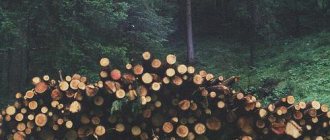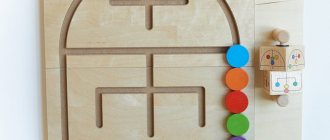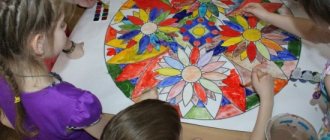What causes dyslexia
Dyslexia is a partial impairment of the reading process caused by various reasons, including immaturity or impairment of higher mental functions.
The following reading characteristics in a child indicate dyslexia:
- phonemic problems associated with difficulties in recognizing phonemes, even in strong positions the child reads the word incorrectly (“Shenya” instead of “Zhenya”),
- analytical-synthetic problems , when a child allows distortions in the sound-syllable structure of a word (“nile” instead of “ruler”) or does not master the principles of syllable fusion (cannot read a word of several syllables at all).
- optical problems , which manifest themselves in difficulties in assimilating images of letters, their elements and in general with
- optical-spatial disorders and features of visual gnosis (the child does not orientate himself on the sheet, does not see the rulers).
- mnestic disorders , which manifest themselves in the inability to remember letters,
- agrammatical problems are typical for those children who have already mastered the skill of reading, but make mistakes during “fluent” reading. Or this is one of the signs of “guessing” reading, when a child reads the beginning of a word and then “substitutes” the wrong ending.
In semantic dyslexia, different mechanisms of impairment are observed:
- the wrong type of learning to read is letter-by-letter reading “book-staging” (when a child, instead of a word, reads a list of individual letters: B, A, B, A),
- poor vocabulary,
- poor level of mastery of grammar (the child knows “pencil” and “ruler” separately, but after reading the task “show the ruler with a pencil”, he cannot complete it).
Dyslexia is often mixed, when a child has different types of reading impairments. This happens if a child had severe speech impairments before school, or was silent for a long time, or these are combined disorders in the structure of other defects (with cerebral palsy, various syndromes).
If the child is physiologically and mentally healthy, studies according to the general education program, the school speech therapist deals with the problem.
If dyslexia is associated with problems of the child’s physical and mental health, then it is necessary to involve other specialists in the work - a child neurologist, psychologist, neuropsychologist, massage therapist.
Historical chronicle
The first suggestion about a special disorder - dyslexia - was made in 1887 by the German ophthalmologist Berlin. Nine years later, a sensational publication “Congenital word blindness” appeared in one of the English publications.
Its author, therapist Morgan, described a unique mental disorder that was manifested by the lack of fluent reading skills in a 14-year-old teenager who excelled in mathematics.
The medical community explained this phenomenon as the result of a defect in visual perception. In 1925, the American neuropsychologist Orton associated dyslexia with a disorder in the interaction of the cerebral hemispheres.
In the 70s of the 20th century, the culprit of word blindness was declared to be a deviation in phonological development, that is, the ability to distinguish sounds. This version finds the largest number of supporters in the modern scientific world.
How can you tell if your child will have reading problems?
Every problem has roots. Let's look at various ways to diagnose problems that can later lead to the development of dyslexia:
- If a child has speech disorders, he goes to a speech therapist. The speech therapist also looks at whether the child has disorders of phonemic hearing, analysis and synthesis, understanding, whether the dictionary is impaired and whether there are agrammatisms (incorrect formation of words and their forms), how well coherent speech is developed. It is in classes that develop speech that the speech therapist also carries out the prevention of reading disorders, especially those types that are associated specifically with speech.
- During art classes and when using any types of manual labor, a good teacher will notice that the child has poorly developed fine motor skills (cannot cut, sculpt, glue, lace, or fasten buttons). For writing and calligraphy, it is very important to be able to perform small, precise actions. They are specially trained. I recommend these exercises every day.
- If a child goes to school, he must be able to ride a two-wheeled bicycle - the functions of writing and reading require coordination and coherence.
- Poor control of rhythm can complicate the learning of words with complex syllabic structures, which means it needs to be developed - dancing, music or more specialized procedures, such as an interactive metronome, will help.
- Reading requires well-formed visual-motor and auditory-motor coordination in order to be able to see, hear, and speak at the same time - this is what is important when reading.
- The child must be able to remember and, if necessary, retell what he has read.
- It is necessary to understand which hand the child has - the leading one, with which hand he will write.
Speech therapists, psychologists, neurophysiologists and neuropsychologists often pay attention not only to the leading hand, but also to the leg and eye. Lateralization is important because in the Russian language there are letters that face right or left, are symmetrical vertically and horizontally, or are completely asymmetrical, and a left-handed child may have difficulty learning directions.
In fact, the vast majority of left-handed people and ambidextrous people (people who can use both hands equally) do not have any special features other than their dominant hand. The left-hemispheric location of the speech center is observed in 95% of right-handed people and 70% of left-handed people. And only 15% of left-handed people have a speech center in the right hemisphere. Such children have peculiarities of thinking - they think in images. They may have the ability to draw, play music, or, on the contrary, they may have a number of neurological problems.
Factors that aggravate the situation with dyslexia:
1. Weak language skills and speech problems : late (less often early) onset of one’s own speech; characterized by bright turns of speech; deficiencies in phonetics; difficulty expressing thoughts in words; stuttering.
2. Problems with mastering writing skills : difficulties in writing words; reversal (mirror writing) of letters and numbers; a large number of errors when copying and writing from dictation; bad handwriting; there are many corrections in written works; combined with dysgraphia and dysorthography.
3. Weak math skills: learning difficulties; difficulty estimating time; may be able to perform arithmetic operations, but not the ability to write or read them; problems with algebra or higher mathematics, but may also be successful in the subject; poor memory for sequences.
4. Psychological difficulties and problems : low academic performance; insufficient formation of visual memory; low speed of completing tasks and inability to meet the deadline allocated for completing the task; emotional instability – excessive emotionality or irritability; difficulty concentrating, including on one activity; problematic switching between different types of activities; loss of interest, lack of self-confidence; high level of anxiety and fear of mistakes, can be assessed as a lazy student; Doesn't do well on tests despite having a high IQ.
5. Motor and psychomotor difficulties : may have poor handwriting; disorders of spatial orientation, visual-motor coordination, clumsiness, clumsiness, disturbances of interhemispheric interaction; impaired coordination of movements and the associated assimilation of knowledge - a violation of the assimilation of the body diagram, confuses “right” - “left” and “above” - “under”; lags behind in team sports, has difficulty with motor-oriented tasks, learns best through hands-on experience.
6. Neurological problems : often dizziness, headache, stomach pain; behavior may be erratic or disruptive; urinary incontinence even beyond the appropriate age; a sharp increase in difficulties under time pressure and stress.
7. Vision problems: complaints of vision problems that are not detected during standard examinations; there may be a disturbance in depth perception; defects in peripheral vision.
The listed factors can be combined or isolated, characteristic only of dyslexia.
Sometimes it seems that skills are “mood dependent” and change from day to day. A child with dyslexia can easily read and write a word today, and just as easily fail to do so tomorrow.
Also, children with dyslexia are characterized by variability in errors: the same word can be read both correctly and incorrectly, and the erroneous reading looks different with each attempt: “dig - dig - roll - guess.”
Tips for parents
Of course, dyslexia requires increased attention not only from specialists, but also from parents. Help your child.
Before you start your homework on correcting the now fashionable disease, remember some rules.
- Calmness and patience. Even when your nerves are at their limit. Remember that dyslexia is not a sign of laziness, it is truly a disorder, a health problem.
- You cannot punish a sluggishly reading child for mistakes when reading.
- Praise. Highlight achievements. The situation of success is inspiring.
- Do not share your feelings about this with other people in front of your child, this can seriously hurt him.
- Dyslexia can manifest itself in different ways. Let's not go deeper, there are specialists for this.
When starting classes, remember that they should not be done occasionally, but regularly. To prevent your baby from getting bored with daily exercises, try to organize them in a fun way and do not overload the growing body.
Symptoms
Depending on the type of disorder, the symptoms of dyslexia can vary greatly. But there are several common features that will help to detect and eliminate this disorder in time.
- Frequently rubbing the eyes, reading from an unusual angle.
- Bringing a book closer to your eyes when reading. At the same time, vision can be excellent and in other cases (playing with objects in hands, looking into the distance) deviations do not appear.
- Reading with one eye or alternately closing eyes.
- Frequent fatigue, reluctance to complete reading-related tasks. At school, this could be homework, reading additional literature.
- Omission of sounds, words, phrases when reading, breaks in voicing the text.
- Complaints of headache and fatigue that only occur while reading.
- Errors associated with understanding the text, absent-mindedness, inattention, inability to retell what was read or say what the text was about, lack of understanding of its individual sections.
Associated problems with handwriting, learning to write, spelling words with unusual errors.
Reading impairment: exercises to correct dyslexia
We offer you tasks that will benefit all children with dyslexia. The exercises are aimed at developing visual attention, perception and memory, enriching vocabulary and improving reading skills.
Making a word from initial letters
Place pictures in front of your child, the initial letters of which together form a word. You can use toys or any other items. Try offering the opposite option: the baby will “bewitch” the word in the same way, and you will read it.
The words are lost
“There are words hidden in the room that begin with the sound R. Let’s look for them.” Next, complicate the task and ask them to find objects that end with a certain sound.
Letter from memory
The child must read the word and remember it, and then write it. Happened? We complicate the task and offer a phrase and a sentence.
Fix the word
Invite your child to make a word from a set of syllables. At the very beginning of learning, if difficulties arise, show a hint picture.
Velcro words
“The words are stuck to each other. They need to be helped to separate.”
MOMDAPAGRANDMOTHERGRANDFATHERWORDPICTURE
Subsequently, complicate the task and offer to divide the sentence into words.
I'M GOING FOR A WALK. I BOUGHT A BEAUTIFUL DOLL. ITS NATASHA.
Word game
We all played "city games". The principle of playing with a child is similar, only define the theme more simply. Or even without it at all. Just come up with a chain of words together that end with the last sound of the previous one. For example: mother - album - chalk - moon - aquarium.
Diagnostics
Diagnosis of dyslexia may include tasks such as:
- find the right letter;
- come up with as many words as possible starting with a certain sound;
- highlight all vowels or consonants in a given word;
- compare the sound composition of words that differ in one sound (kot-kit, mak-rak);
- count the number of letters in a word or words in a sentence;
- make up a short story based on a series of pictures.
Such a comprehensive examination allows you to find out the level of speech development of the child, understand what his main difficulties are, and draw up an individual plan for correctional classes. It is necessary to establish exactly what form of dyslexia the student has; exercises and their complexity will depend on this.
Additional exercises
In order for the learning process to go faster, it is important to further develop the speech, memory, attention and thinking of a preschooler (or primary school student). To do this, you can use the following exercise games:
- When going to the store, make a shopping list with your son (daughter), draw on paper a diagram of the movement along the street and the store. On the way (if you are walking) ask - where should you go? Ask to show the way, indicate landmarks.
- It is very useful to play regular hopscotch or “soldiers” with your child so that he will make turns on command - to the right, to the left.
- Hide a toy (or other thing) in your apartment and draw a diagram where you can find it. Ask your child to do this.
- Select 7-10 toys and place them in a row. Then invite the child to enter the room, let him look at the toys for 5 seconds, ask him to turn away. Hide one toy, ask to determine which one was hidden.
- Place 5-10 small toys (or objects with a pronounced texture) into a bag. Let the child study them first, and then, putting the pen into the bag, determine by touch what exactly is in his hand.
- In the evening, while communicating, ask you to remember sequentially what the baby did in the morning, afternoon, and evening. What worked for him, what didn’t. Discuss the plan for the next day.





